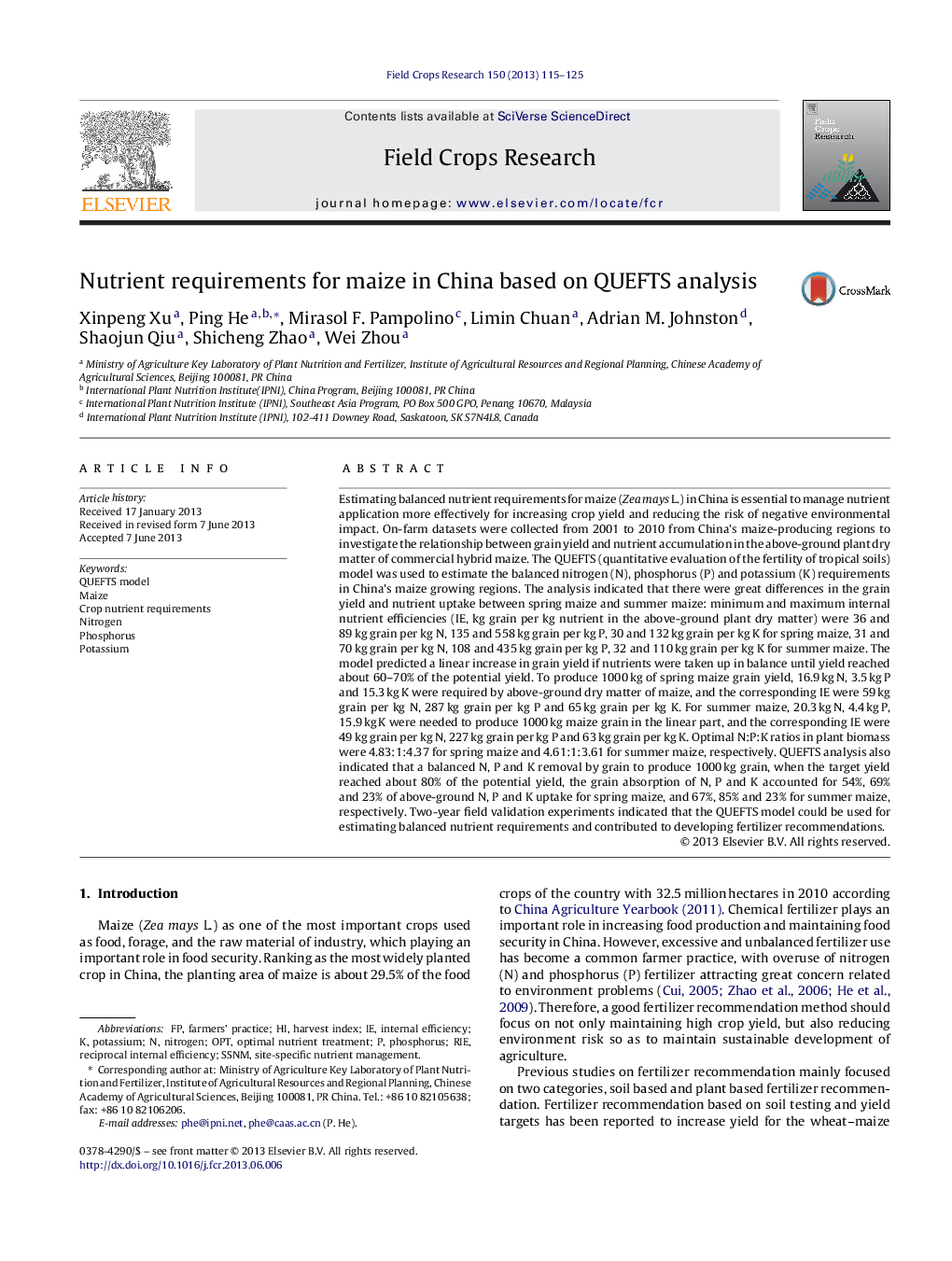| Article ID | Journal | Published Year | Pages | File Type |
|---|---|---|---|---|
| 6375047 | Field Crops Research | 2013 | 11 Pages |
â¢Larger datasets (about 5000 data) were used to analyze characteristics of grain yield, nutrient uptake and internal efficiency for maize in China.â¢The datasets covered all main maize production areas.â¢The balanced nutrients requirements were estimated by QUEFTS model for spring maize and summer maize in China.â¢Field validation indicated that the QUEFTS model could be used for estimating balanced nutrient requirements and developing fertilizer recommendations.
Estimating balanced nutrient requirements for maize (Zea mays L.) in China is essential to manage nutrient application more effectively for increasing crop yield and reducing the risk of negative environmental impact. On-farm datasets were collected from 2001 to 2010 from China's maize-producing regions to investigate the relationship between grain yield and nutrient accumulation in the above-ground plant dry matter of commercial hybrid maize. The QUEFTS (quantitative evaluation of the fertility of tropical soils) model was used to estimate the balanced nitrogen (N), phosphorus (P) and potassium (K) requirements in China's maize growing regions. The analysis indicated that there were great differences in the grain yield and nutrient uptake between spring maize and summer maize: minimum and maximum internal nutrient efficiencies (IE, kg grain per kg nutrient in the above-ground plant dry matter) were 36 and 89 kg grain per kg N, 135 and 558 kg grain per kg P, 30 and 132 kg grain per kg K for spring maize, 31 and 70 kg grain per kg N, 108 and 435 kg grain per kg P, 32 and 110 kg grain per kg K for summer maize. The model predicted a linear increase in grain yield if nutrients were taken up in balance until yield reached about 60-70% of the potential yield. To produce 1000 kg of spring maize grain yield, 16.9 kg N, 3.5 kg P and 15.3 kg K were required by above-ground dry matter of maize, and the corresponding IE were 59 kg grain per kg N, 287 kg grain per kg P and 65 kg grain per kg K. For summer maize, 20.3 kg N, 4.4 kg P, 15.9 kg K were needed to produce 1000 kg maize grain in the linear part, and the corresponding IE were 49 kg grain per kg N, 227 kg grain per kg P and 63 kg grain per kg K. Optimal N:P:K ratios in plant biomass were 4.83:1:4.37 for spring maize and 4.61:1:3.61 for summer maize, respectively. QUEFTS analysis also indicated that a balanced N, P and K removal by grain to produce 1000 kg grain, when the target yield reached about 80% of the potential yield, the grain absorption of N, P and K accounted for 54%, 69% and 23% of above-ground N, P and K uptake for spring maize, and 67%, 85% and 23% for summer maize, respectively. Two-year field validation experiments indicated that the QUEFTS model could be used for estimating balanced nutrient requirements and contributed to developing fertilizer recommendations.
